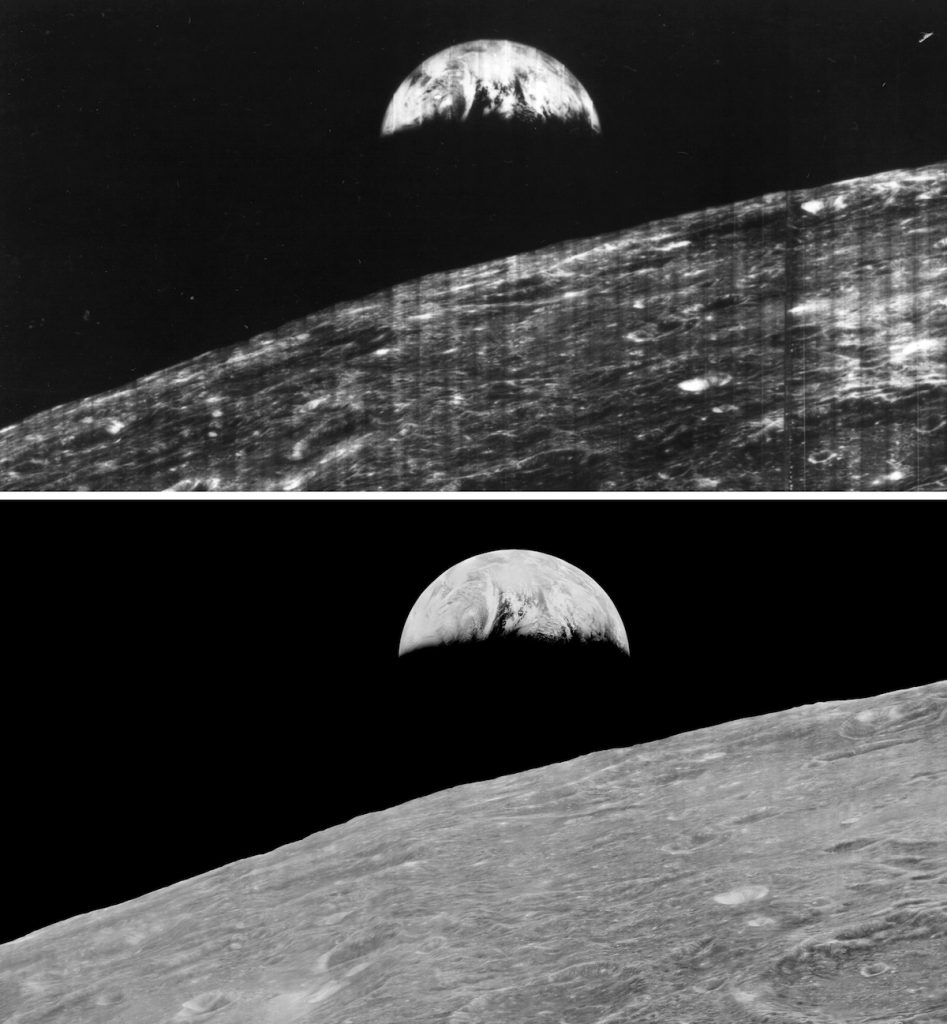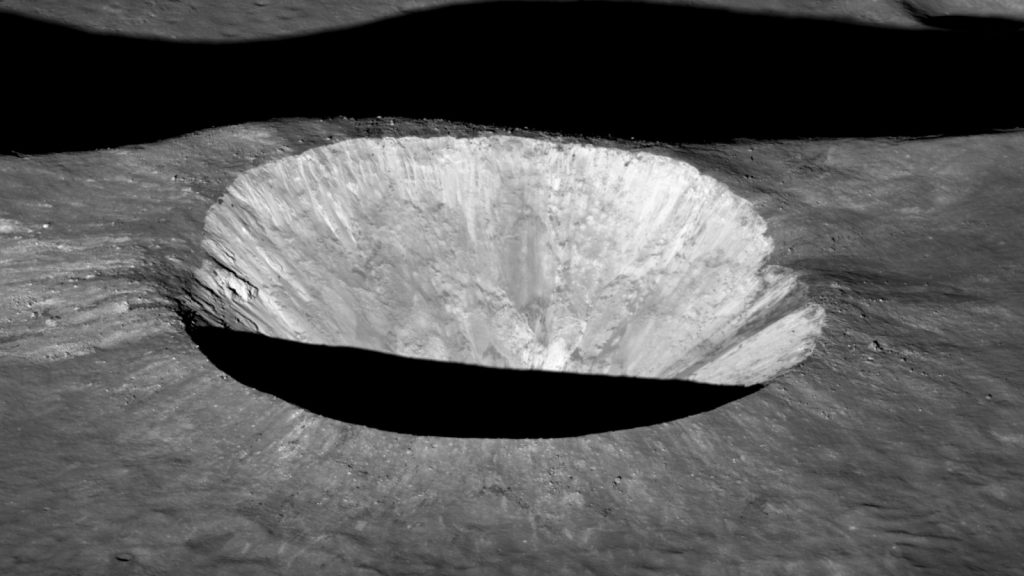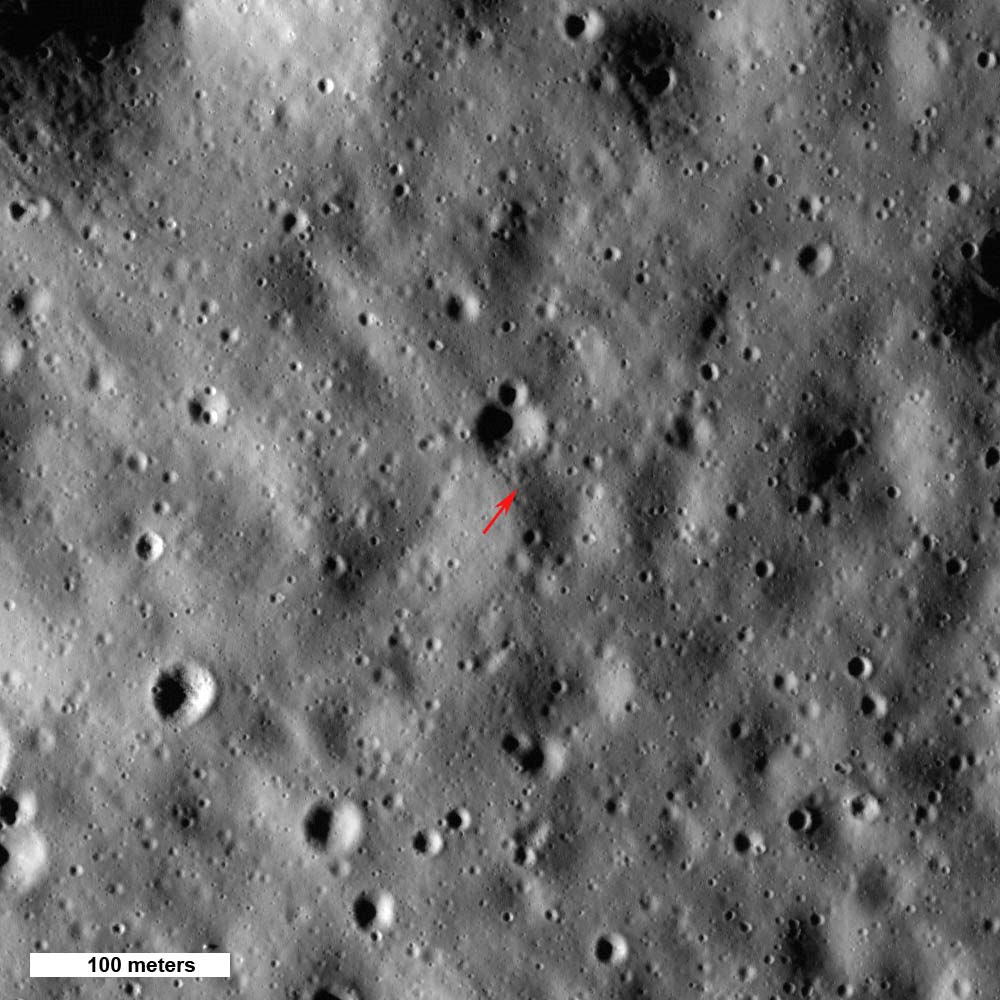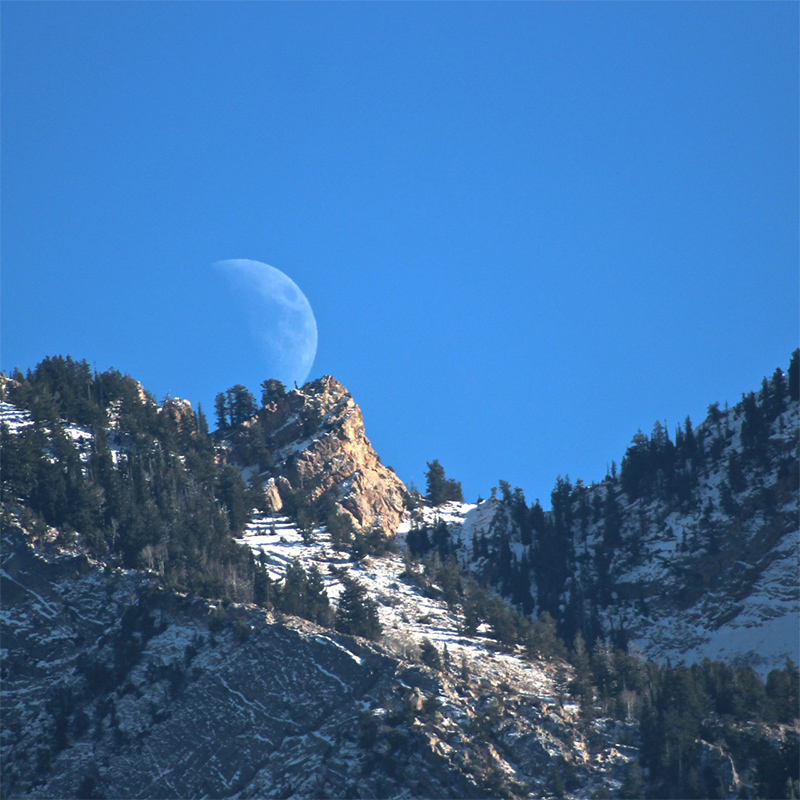Last updated on September 16th, 2023
Anywhere on Earth you look up into the night sky, the most prominent light you will see is the moon, Earth’s natural satellite. Generation after generation, the moon obediently and patiently completes its journey in the night sky. Since the beginning of time, this ever-changing ball of white light in the night sky has fascinated inhabitants of the Earth. Growing up, children from around the world were always in awe of the moon, which is known by many cultures by different names. With these facts about the Moon, let’s explore this fascinating white light in the sky together and learn more about it.
Interesting Facts About the Moon
Many moons!
1. Our solar system has over 200 moons orbiting planets; the Earth’s moon is ranked fifth in size. Its radius is 1080 miles, while the largest moon, Ganymede, orbiting Jupiter, has a radius of 1635 miles.
Moon vs Earth
2. Our moon is little more than one-quarter of the size of the Earth. That means that just more than three moons will go into the same space the Earth occupies, nearly a one to four ratio, and the only planet-moon pair with that proportions in our solar system.
Just the same face
3. Did you know that we always see the same side of the moon when looking at it from the Earth? If you want to see the other side of the moon, you must go into space and look at it from a spacecraft.
Changes in shape
4. The moon changes shapes at different times during the month. These shapes we call the phases of the moon. You will also notice that the moon’s illumination decreases and increases regularly.
Borrowed light
5. The reason why the moon shines like a light in the sky is because the sun shines on it. We can see the moon much clearer at night when we can’t see the sunlight. With this, we understand that the moon doesn’t make its own light.
Above is the appearance of the Moon during the November 2022 total lunar eclipse. Includes annotations of the contact times and various eclipse statistics.
Lunar eclipse
6. A lunar eclipse is when we can only see the moon as a dark dot in the sky. It happens when the moon, the Earth, and the sun are aligned in a single row, and the Earth’s shadow falls on the moon. You can see the rounded shadow of the Earth on the moon during a Lunar Eclipse.
Size comparison
7. Did you know the moon is about 400 times smaller than the sun? When looking at the moon from the Earth, it is about the same size as the sun. That is because the moon is much closer to the Earth than the sun.
8. A 13th full moon can be seen in the Lunar cycle every two and a half years. That is because the complete cycle of the moon phase takes just over 29 days to complete. This 13th full moon doesn’t have a name and is also known as a blue moon.
North vs South
9. The moon looks quite different in the Southern Hemisphere than what it looks like in the Northern Hemisphere. They see the moons upside down, so the dark side in the north is illuminated in the Southern Hemisphere.
The above animation shows both the orbit and the rotation of the Moon. The yellow circle with the arrow and radial line have been added to make the rotation more apparent. The arrow indicates the direction of rotation. The radial line points to the center of the visible disk of the Moon at 0°N 0°E.
Slow and steady
10. Because of the slow axis spin of the moon, it appears to be standing still if it is observed from the Earth. You won’t be able to tell whether the moon is spinning with the naked eye. Scientists call the slow spinning of the moon a synchronous rotation.
Front and back
11. The side of the moon that is closest to the Earth is called the front side of the moon. The side that is always dark and away from us is known as the back side of the moon.
Density!
12. The Earth is indeed 81 times heavier than the Moon. That means the moon’s mass is only about 1.2 percent of Earth’s. The moon’s density is only about 60 percent of the Earth’s density, roughly 3.3 grams per cubic centimeter.
A cloud of dust
13. Data retrieved from the LADEE spacecraft showed that a thin layer of dust surrounds the moon. After researchers studied it, they found that the dust cloud is caused by the high impact of particles that come from comets in space.
How many seconds away is the moon?
14. The moon is roughly 1.3 light seconds away from the Earth. While the physical distance to the moon is approximately 239,000 miles, it will take light 1.28 seconds to reach the Earth from the moon. And the sun is 8.3 light-minutes away (93,000,000 miles).

3.87 cm every year
15. According to observation, the moon is moving away from the Earth at about 3.87 cm per year. If the moon moves too far from the Earth, it will slow down and become unstable. But that would take billions of years.
Facts About the Surface of the Moon
Mountains on the moon
16. There are many mountains (as many as 31) and mountain ranges on the moon. There are also an estimated 18 mountain ranges on the moon’s surface. The tallest, Mons Huygens, is more than 18,000 feet high.
A Dutch astronomer
17. Mons Huygens mountain on the moon is named after the Dutch astronomer, Christiaan Huygens. He also discovered Saturn’s largest orbiting moon, Titan. All his moon and other astronomy findings are reported in a book, Systema Saturnium, published in 1659.
Dark spots
18. Huge dark spots can be seen on the moon’s surface; they can even be observed from Earth without needing a telescope. They are generally known by astronauts and scientists as Marias, which is a Latin word for seas.

Collisions!
19. The moon’s surface is covered with mostly rounded but also other odd-shaped holes. They are known as impact craters and are formed when objects from space, such as meteorites and asteroids, collide with the moon’s surface.
Water Ice on the moon
20. Older surfaces of the moon show more impact holes, so the more craters, the older the area is. This means these areas were exposed to space bodies for longer; some of these impact craters on the moon’s surface are very old, even ancient. In 2018, ISRO’s Chandrayaan-1 found deposits of water ice in the permanently shaded craters along the moon’s south pole.
Types of lunar craters
21. There are three basic types of lunar impact craters on the surface of the moon. Astronomers and everybody else generally know them as basins, complex craters, and simple craters. Simple craters are the ones people typically talk about or visualize; they are the bowl-shaped ones with flat or rounded floors.
The highest point

22. Even though the Selenean summit is the highest point on the moon, it is still not considered the highest mountain. That is because it is not steep enough to be a mountain; therefore, Mons Huygens is still the highest mountain.
23. Crater rays are some of the most interesting and prominent features of the moon’s surface. They are often much narrower than normal craters and stretch over different types of terrain. These rays can be seen as an indication of fresh impact craters.
24. These chains are formed when celestial debris like comets or an asteroid with low strength are pulled apart by tides. That can only happen if the body moves too close to a planet and moon system and hits the moon.
25. Rilles are formed as underground lava channels which collapsed after the lava flowed away. They can be found as long valleys on the moon’s surface where they cross the seas or Maris on the moon.
26. The oxidation of moondust may smell like burned gunpowder if it is possible to smell it. That is according to Astronauts who landed on the moon and collected dust samples. Back on earth, it doesn’t have any smell at all.
Gravity, gravity, gravity!
27. Gravity on the moon’s surface is only about one-sixth of Earth’s. According to NASA, the gravity on the moon is only about 1.62 meters per second squared. That is why it looks like the astronauts were bouncing instead of walking on the moon.

Facts About the Orbit of the Moon
Orbit time and shape
28. It takes the moon about one month to complete its orbit around the Earth. The exact time it takes to circle the Earth is 27.3 days. It treks around the Earth in an elongated or elliptical track.
Heliocentric
29. All celestial bodies in our solar system follow a heliocentric orbit around the sun. It includes all planets, their orbiting moons, asteroid belts, and everything else in the solar system, making the sun the central point of the Sol system.
30. Because the moon spins very slowly, it takes about the same time it orbits the Earth to complete one spin on its own axis.
Sometimes near, sometimes far!
31. The average distance from the Earth to the moon is about 239,000 miles. But it changes as the moon completes its elliptical orbit around the Earth. At different stages of the trajectory, it will be closer; at some points, it will be much further away from the Earth.
32. There are three types of geocentric orbits that the moon and everything else follows around the Earth. They are known as the low-Earth orbit, medium-Earth orbit, and the Geostationary orbit. A geocentric orbit is one where an object rotates around the Earth, and that is the path the moon follows.
Know the Structure of the Moon
33. According to the latest research, the Earth and the moon do not consist of basically the same materials. Previously, scientists believed an impact between a similar planet, only known as Theia, and the Earth created the moon, but it is in doubt now.

34. The moon has a core, a mantle, and a crust, just like the Earth. It is suggested that the moon has an inner core rich in iron. This inner core has a radius of roughly 150 miles.
35. Like the Earth, the moon has a mantle that extends to just more than 31 miles below the surface. They also believe that the moon’s mantle is much richer in iron than Earth’s.
36. The moon’s crust mainly comprises silicon, iron, magnesium, aluminum, calcium, and oxygen. The crust was created when lighter minerals crystalized and raised up to form the crust, which is roughly 38 to 64 miles thick.
37. Dust, broken rocks, and other materials cover the moon’s crust, known as the regolith, as it is on Earth. The top loose layer on the rocky surface is created by the impact of other bodies from space that collides with the moon and blasts it into small fine pieces.
38. The exact structure of the moon is still much of a mystery to scientists. Previously, scientists believed there was a partially molten layer beneath the moon’s mantle where many clues could be found. New studies and evidence show that there might not be such a semi-fluidity level beneath the mantle at all.
Facts About the Phases of the Moon

39. There are about eight different phases the moon goes through in one orbit cycle around the Earth. These eight phases go through every 29.5 days and can be observed in the various physical manifestations.
40. When you can’t see the moon from the Earth without the aid of a telescope, that phase is called a new moon. It is also known as the invisible phase, where very little light from the sun is reflected from the moon’s surface.
41. A thin crescent on the right side of the moon is known as the waxing crescent moon phase. This is the second stage of the Lunar cycle and will last until nearly half of the moon’s surface is illuminated.
42. If you can see the right half of the moon’s surface facing toward the Earth, it is the first quarter. In this stage, the moon will rise around or just after midday and be visible during the bright daylight.
43. When three-quarters of the right side of the moon’s visible surface is lighted, it is the waxing gibbous phase. People from the northern hemisphere will be able to see just a little more than the right-hand half of the moon illuminated.
44. The full moon phase is when a complete, fully illuminated, visible surface of the moon can be seen from Earth. You will see it as a full round white orb in the sky that reflects the sun’s light. People from various religious groups believe that the full moon has some type of spiritual significance.
45. The next phase of the moon is the waning gibbous, where the right side of the moon starts to fade. That means only the left side is illuminated, and it will last until the right half of the moon’s surface is dark.
46. The seventh phase of the moon in the Lunar cycle is known as the third quarter or half moon. Another name for the third quarter is the final quarter. You will see this moon once a month, rising around midnight and setting just after noon that day. The moon would have completed about three-quarters of its orbit around the Earth.
47. The part of the moon’s visible surface will decrease during the waning crescent phase until just about one percent of the moon is lit. When this phase begins, you know that the moon has almost completed its orbit around the Earth.
48. The moon has four primary phases: the new moon, the first quarter, the full moon, and the third quarter. An eclipse or impressive lunar eclipse can occur during the new and full moon phases. Another name for the third quarter is the final quarter.

49. The Intermediate phases of the moon cycle are The waxing crescent, the waxing gibbous, the waning crescent, and the waning gibbous. All moon phases, including the lesser ones, occur once every month or lunar cycle. They are transitional steps of the primary phases.
50. A blue moon is a rare event and happens only when there is more than one full moon phase in a Lunar cycle. Two types of blue moons can occur: the seasonal blue moon and the monthly blue moon. A traditional blue moon means a third full moon in a season with four full moons, which is rare.
. . . continue reading on the next page
